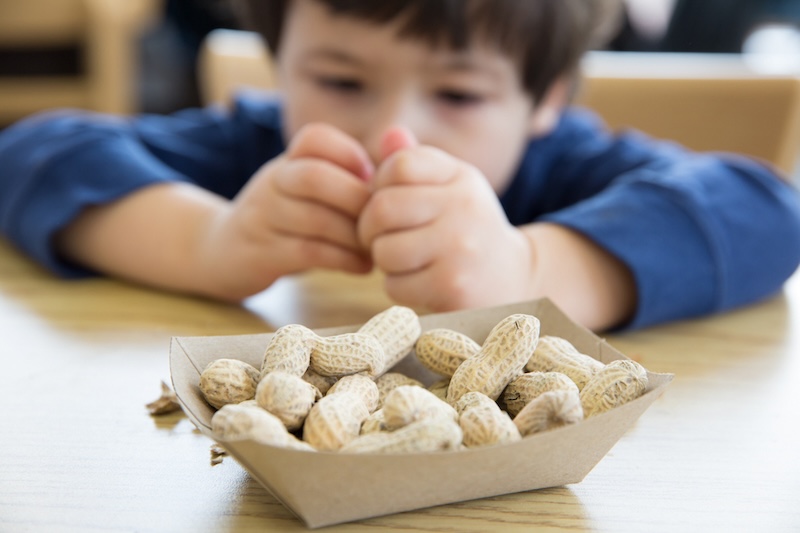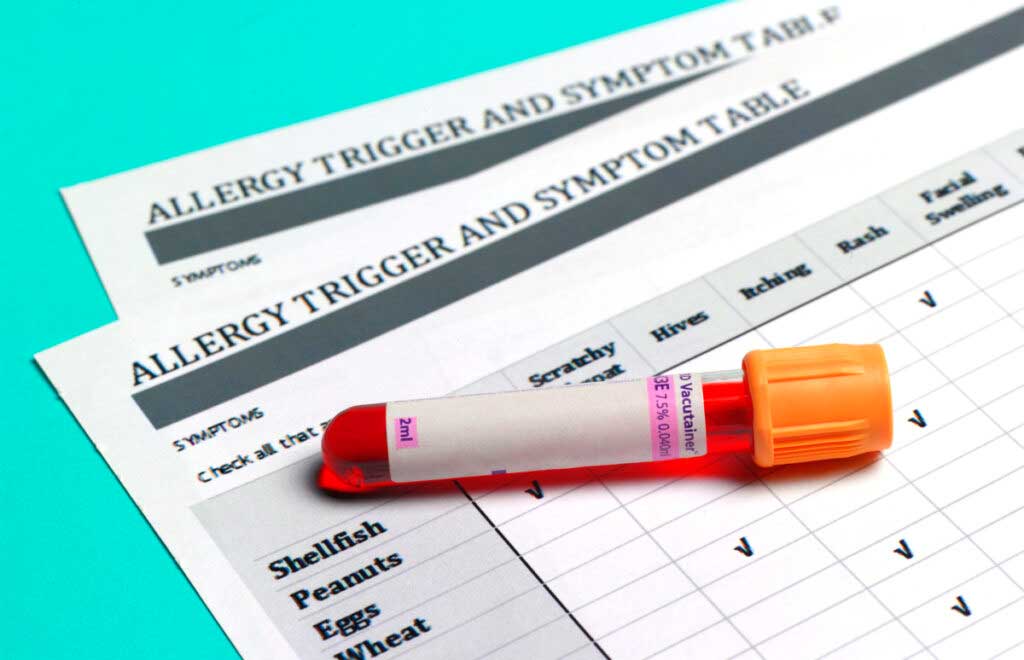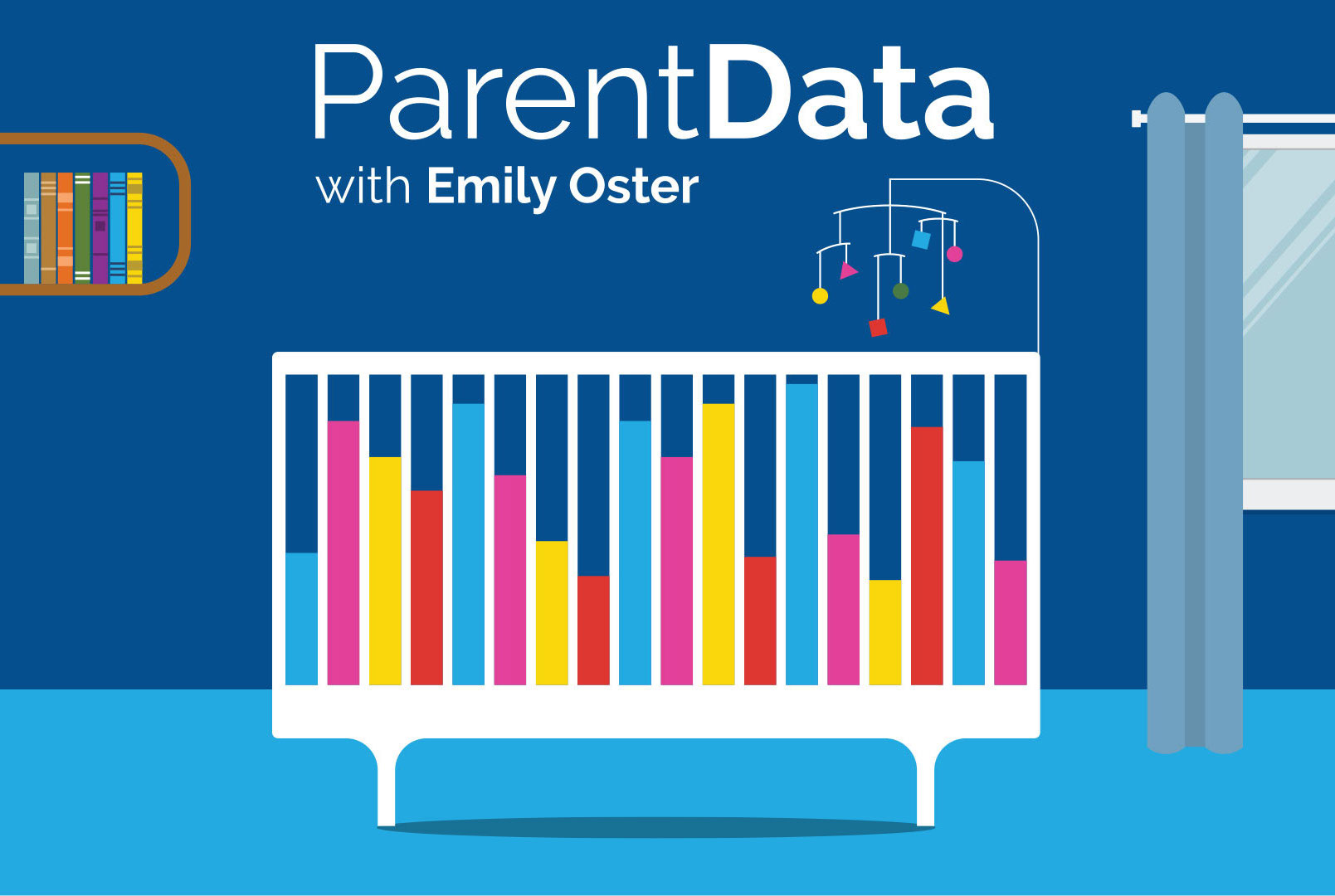One of the topics I talk and write about most frequently is the value of early allergen introduction in preventing allergy development in children. I often tell people it is one of a very small number of strong recommendations in Cribsheet; high-quality randomized controlled trial data demonstrates a remarkable reduction in allergies as a result of introducing foods like peanuts, eggs, and wheat when children are between four and six months.
A natural follow-up question, though, is What if my child does have an allergy? Early introduction lowers the risk of this happening, but not to zero. Overall, an estimated 3% to 7.5% of children are thought to have food allergies, with higher numbers in younger children (this number is hard to estimate, so the range is wide). About 0.5% of children have a peanut allergy, and nearly 2% have an allergy to eggs. Other common allergens include milk, wheat, tree nuts, fish, shellfish, and soybeans.

The severity of these allergies ranges widely, both across allergens but also (more importantly) across children. That severity, in turn, affects how disruptive and dangerous the allergies are for kids and their families. In some cases, for example of children with severe peanut allergies, being out in the world can be terrifying. Accidental peanut exposure, even through other people eating peanuts in the area nearby, can be life-threatening.
Traditionally, the approach to a child with allergies is avoidance of the food to which they are allergic. If it can be done perfectly, this will work to avoid the allergic reaction. The downsides, though, are risks of accidental exposure (for which many people need to carry an EpiPen) and the disruption that comes with avoidance. Because of these downsides, there is widespread interest in treatment approaches for allergies that would eliminate or curb the need for avoidance. The most promising approach to this is called oral immunotherapy, or OIT.
What is OIT?
In simple terms, OIT is a protocol that tries to prompt desensitization to the allergic food by having people consume small, increasing doses. For example, a child with a peanut allergy would start by consuming a very small dose of peanut protein every day, under strict monitoring. The amount would be increased at some interval, such as every few weeks, with the goal of ending with tolerance of a moderate dose.
It is extremely important to emphasize that all OIT should be undertaken under the supervision of a doctor. As discussed more below, even in these settings, adverse events are common. The protocols are complicated, detailed, and adaptive. This is absolutely not a situation in which you should consider trying this at home.
What is the goal of OIT?
The pie-in-the-sky goal of OIT is to induce a permanent tolerance to a food, such that you could (say) not eat peanut butter for a while and then have a little bit of it without a problem.
We are not there yet.
The more practical goal with current technology is to induce tolerance to small amounts of the food, such that if there were an accidental exposure, it would not be life-threatening. There is potentially enormous value to this type of tolerance in terms of improving quality of life and reducing anxiety and fear among children and their parents.
Basically, where we might hope to get to is a case in which you wouldn’t be as worried if your child ate a bite of brownie that unexpectedly had nuts in it.
Which food allergies can be treated this way?
By far the most progress and evidence on this therapy comes around peanuts. In January 2020, the FDA approved a regimen called Palforzia, which is an OIT treatment for peanut allergies. The hope was, in part, that by formalizing this treatment approach, more people would use it. But take-up seems to have been slow — only about 10% of eligible patients had taken the treatment by 2022.
OIT has also been studied for milk and egg allergies and, less extensively, wheat and sesame allergies. In principle, virtually any food allergy might be a candidate for this therapy. In practice, there is more focus on allergens that are more common and have a greater effect on daily life. Milk and eggs are allergies that children often grow out of, so although those are common, the risk-benefit tradeoff of therapy is more complicated.
What actually happens with OIT?
The most well-defined protocol for OIT is the Palforzia dosing for peanuts. In this approach — which mimics what you’d see in other settings — kids start with an initial visit in which they take tiny capsules of peanut protein to see if they have any tolerance at all. If they can tolerate 3 milligrams of peanut protein (equivalent to about 1/100th of a peanut), they can move on to the next step.
Most of the protocol is about a six-month period in which the dose is increased every few weeks, with the goal of reaching a maintenance dose of 300 mg. The dosing in this part will be done at home, although when the dose is increased, the first larger dose is at the allergist’s office. On a daily basis, you give your child the dose with food or right after a meal. If the protocol is completed, the child is then moved to a daily maintenance dose, which they take indefinitely.
It is important to note that, at this stage, the child is still expected to keep a strict peanut-free diet and carry an EpiPen. The goal of the treatment is to induce a tolerance to about 300 mg of peanut protein, which is about one peanut or a quarter-teaspoon of peanut butter. By tolerance, we mean that the child would have only mild allergic symptoms.
This is a modest goal but, again, possibly life-changing for families with children with life-threatening allergies.
These protocols focus on people with severe peanut allergies. Other work has shown that a simpler approach, involving peanut butter directly, might work for children who have higher-threshold allergies to begin with. These are children who can already tolerate some peanuts, for whom the goal is a larger peanut tolerance.
Does OIT work?
Broadly, yes, although it’s not a panacea.
In the largest single peanut-allergy trial — which evaluated the Palforzia protocol — 67.2% of the treated group were able to ingest 600 mg of peanut protein at the end of the trial without severe symptoms, versus only 4% of the control group. This result is echoed in a meta-analysis that covers a total of about 1,000 children. The treated group was almost 13 times as likely to be tolerant of a moderate dose of peanut protein at the end of the trial.
Similar success shows up in milk, in eggs, and in some smaller data from sesame. Looking in aggregate, it seems clear that it is possible for this approach to achieve desensitization to a small dose.
In the study of children who already have some peanut tolerance, success was even greater. Of the children who were exposed to more peanut butter, 100% of them passed the challenge test versus only 21% of those who avoided peanut butter.
Are there downsides to OIT?
Yes. This approach entails significant risk of allergic reactions, more or less by definition. During that largest peanut trial, children in the trial group were more likely to have moderate or severe allergic reactions (64% in treatment versus 45.2% in control) during the protocol. The meta-analysis overall also shows an increase in severe reaction and use of an EpiPen.
Although the data is more limited, the meta-analysis showed a similar elevated risk during the post-treatment phase. This could be a result of reaction to the maintenance dose of the medication, or it could be a result of changes in behavior (less caution?) among treatment families.
The elevated risk of severe reactions also shows up in trials with other foods.
The other downside of this treatment is that it is very intensive. During the up-dosing period, there are frequent, lengthy visits to the allergist. Even after treatment ends, it is necessary to continue a maintenance dose of the medication effectively forever. A key question for families is whether this is feasible for them.
Remember: This is a very active research area
At the moment, we have evidence of efficacy in terms of desensitization, but with some fairly clear downsides and risks. However, these therapies are relatively new and, in the long run, enormously promising. As a result, there is a very active research space around how to make them work, and make them work better.
Most of the ongoing research is about adding another drug to the standard protocol to try to make it work better. For example, there are small studies like this one, which adds treatment with omalizumab, an anti-inflammatory drug. That pilot study suggested a possible improvement in tolerance.
Another option is to add a monoclonal antibody called dupilumab to the OIT. Early (unpublished) results from a trial of this approach in children seem to show some efficacy. There are other studies looking at adding probiotics, or at using baked forms of allergens, which are tolerated better by some people.
This research is all working toward the same goal: making these approaches more effective, longer-lasting, and safer. This is crucial because — as we have seen with the low take-up of Palforzia — the current protocol has enough limitations that it has not been widely used. It seems extremely likely that a version of this therapy is the future of treating allergies. At the moment, the standard of care for allergies remains avoidance (and carrying an EpiPen). For individual families, whether it makes sense to consider OIT now is something to discuss in depth with your allergist and pediatrician. Hopefully this data gives you a place to start.
The bottom line
- Oral immunotherapy is a protocol that tries to prompt desensitization to the allergic food by having people consume small, increasing doses.
- The ultimate goal of OIT is to create a permanent tolerance to certain foods, but the technology isn’t quite there yet. The current goal is to induce tolerance to small amounts of the allergen to prevent potential life-threatening situations.
- Although OIT can be applied to many allergies (such as milk, eggs, wheat, and sesame), an official peanut regimen (Palforzia) was approved by the FDA in 2020 because it’s a more common allergy that impacts daily life. Children typically grow out of dairy and egg allergies.
- A downside of OIT is that it requires patients to accept a significant risk of allergic reactions. It is also very intensive, requiring frequent, lengthy visits to the allergist.
- This is an ongoing research area. At the moment, the standard of care for allergies remains avoidance (and carrying an EpiPen).





















Log in